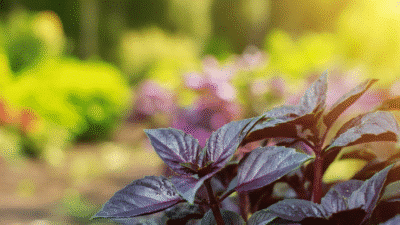Introduction
Have you ever heard of a fence that grows itself, repels pests naturally, and doubles as a source of durable wood? Meet the Osage orange tree (Maclura pomifera), also known as hedge apple, prairie hedge, or bowwood. This remarkable tree is more than just a natural curiosity. Over the centuries, it has served as a sustainable fencing solution, a boon to wildlife, and a prized material for tools, bows, and even farm equipment.
Whether you’re looking for an eco-friendly way to enclose your property or searching for a fascinating piece of natural history, the Osage orange tree offers unmatched utility and charm. Read on to uncover its historical significance, practical applications, and benefits for modern homesteaders and landscapers alike.
What Is an Osage Orange Tree?
The Osage orange tree has a rich history dating back to the Great Plains region of the United States, particularly in areas like Texas, Oklahoma, and Arkansas, where it was first cultivated by the Osage Nation. These hardy trees typically grow up to 50 feet tall, with striking orange-brown bark, dark glossy leaves, and distinctive fruit known as hedge apples.
While its large, round fruit may not be edible, it has gained a reputation for its pest-repelling properties. The tree also features sharp, steel-strong thorns, making it a formidable natural barrier.
But beyond its physical traits, the Maclura pomifera is a living testament to sustainability. Its many uses make it an asset to homesteaders, conservationists, and anyone looking for practical, nature-inspired solutions.
Benefits of the Osage Orange Tree
Why was the Osage orange tree dubbed “nature’s ultimate living fence”? From preserving ecosystems to keeping livestock in place, here are some key benefits of this unique tree.
1. A Sustainable Living Fence
Before barbed wire took over in the late 19th century, settlers planted thousands of miles of Osage orange hedgerows across the Midwest. Once planted in dense rows, these trees formed thorny, impenetrable hedges, earning them a reputation as “horse-high, bull-strong, and pig-tight.”
Unlike traditional fences, living Osage hedges need minimal upkeep once established and can last for decades without decaying. These trees propagate easily via seeds or by sending up new shoots, naturally filling in gaps over time.
2. Durability and Utility of Osage Orange Wood
The Osage orange tree also boasts remarkably tough and long-lasting wood. Known for its vivid yellow-orange hue and tight grain, this wood is virtually rot-proof and resistant to pests like termites.
Uses of Osage orange wood include:
- Fence posts that last up to 50 years in the ground.
- Tool handles, wagon wheels, and farm equipment.
- Bow-making by Native Americans, thanks to its flexibility and tensile strength (hence the nickname, bowwood).
If you’re looking for wood that stands the test of time, Osage orange wood is a top contender.
3. Natural Pest Repellent
The Osage orange tree’s fruit, commonly called hedge apples, has been used as a natural way to deter pests. While scientific studies are mixed, many people place these large, bumpy fruits in basements, attics, or barns to fend off insects like spiders and cockroaches.
Plus, crushing the fruit releases a milky sap that some claim has mild insect-repelling properties. It’s a chemical-free option that reinforces the Osage’s reputation as both practical and eco-friendly.
4. Ecological Importance
Osage orange trees aren’t just about fences and pest control. They provide crucial support for wildlife, serving as windbreaks and shelter for birds, small mammals, and pollinators. Their hardiness and ability to grow in a range of soil conditions make them ideal for erosion control and habitat restoration.
5. A Historical and Cultural Icon
Native Americans recognized the value of this tree long before European settlers. The Osage Nation, for whom the tree is named, used its wood to craft bows that became prized for hunting and warfare. French explorers called it bois d’arc (meaning “wood of the bow”), a name that still reflects its cultural significance.
How to Use the Osage Orange Tree Today
Thanks to its versatility, the Osage orange tree can still be a valuable addition to farms, homesteads, or even urban landscapes. Here’s how it can be put to use:
Plant a Living Fence
To create a natural enclosure, plant Osage orange saplings 6–8 inches apart in a row. Within a few years, you’ll have a dense hedge perfect for marking boundaries or containing livestock. Be prepared for sharp thorns, though! Gloves are your best friend when handling this hardy plant.
Make Durable Fence Posts
Using Osage orange wood for fence posts? Great choice. Harvest mature trees, cut posts to your desired dimensions, and enjoy their incredible lifespan—even in damp, rot-prone soil.
Test the Fruit’s Pest-Repelling Powers
Got critter problems? Hedge apples may help. Simply place the fruit near affected areas of your home or storage space. It’s an all-natural solution that costs nothing if you already grow the tree.
Woodworking Projects
If you’re a craftsman or DIY enthusiast, you’ll love working with Osage orange wood. From rustic furniture to precision-crafted bows, this hard, durable wood holds up beautifully in a wide range of projects.
Challenges of the Osage Orange Tree
While the Osage orange tree has a lot to offer, it’s not without some drawbacks.
- Thorns: These sharp spikes make trimming and handling the tree a challenge. Be prepared with proper tools and gear.
- Overgrowth: If not managed, Osage hedgerows can become invasive, sending up shoots that spread quickly. Regular pruning helps keep them in check.
- Fruit Mess: While hedge apples have their uses, they can be a nuisance when they fall and pile up. Luckily, they’re easy to dispose of or repurpose for pest control.
Why the Osage Orange Tree Matters
The Osage orange tree is more than an ecological relic. Its practical benefits, historical roots, and incredible versatility make it just as relevant today as it was centuries ago. Whether you’re a homesteader seeking sustainable fencing or simply someone fascinated by the wonders of nature, this tree exemplifies how innovation often stems from the natural world.
Explore your options. Plant an Osage fence. Build something lasting from its wood. Or simply educate yourself further on this extraordinary species that combines history, function, and sustainability.
Have more questions about the Osage orange tree? Leave a comment below or explore more on our blog.





This blog is definitely rather handy since I’m at the moment creating an internet floral website – although I am only starting out therefore it’s really fairly small, nothing like this site. Can link to a few of the posts here as they are quite. Thanks much. Zoey Olsen